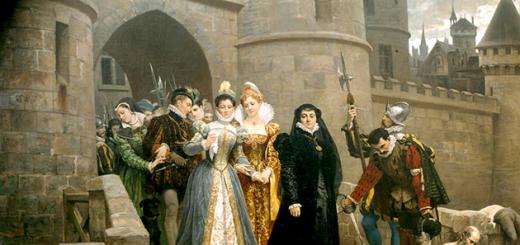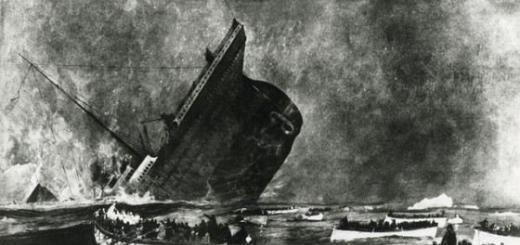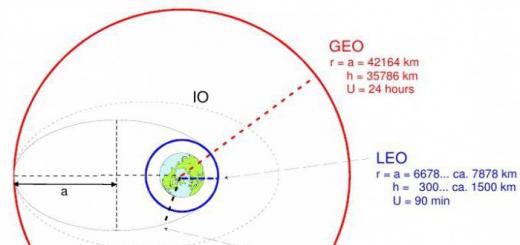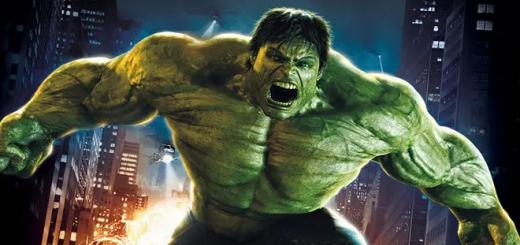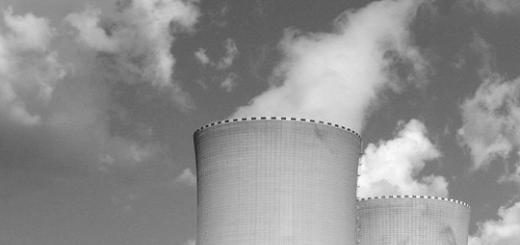Traffic lights(from Russian light and Greek φορός - "carrier") - optical carrier device light information . designed to control traffic mechanical Vehicle and pedestrians at crosswalks and other participantstraffic, trains railway and subway , river and sea vessels, trams, trolleybuses, buses and other transport. In the CIS countries , the traffic light is municipal property of the city.
Story
The first traffic light was installed on December 10, 1868 in London near the British Parliament building. Its inventor, John Peak Knight, was a railway semaphore specialist. The traffic light was manually controlled and had two semaphore arrows: raised horizontally meant a stop signal, and lowered at an angle of 45 ° - movement with caution. At night, a rotating gas lamp was used, with the help of which signals of red and green colors were given, respectively. The traffic light was used to facilitate the crossing of pedestrians across the street, and its signals were intended for vehicles - while pedestrians were walking, vehicles had to stop. On January 2, 1869, the traffic light's gas lamp exploded, injuring a policeman operating the traffic light.
The first automatic traffic light system (capable of switching without direct human intervention) was developed and patented in 1910 by Ernst Sirrin of Chicago. His traffic lights used unlit Stop and Proceed signs.
The inventor of the first electric traffic light is Lester Wire from Salt Lake City (Utah, USA). In 1912, he developed (but did not patent) a traffic light with two round electrical signals (red and green).
On August 5, 1914, in Cleveland, the American Traffic Light Company installed four electric traffic lights designed by James Hoag at the intersection of 105th Street and Euclid Avenue. They had a red and green signal and, when switched, emitted a sound signal. The system was controlled by a policeman sitting in a glass box at an intersection. Traffic lights set traffic rules similar to those currently adopted in the United States: a right turn was carried out at any time in the absence of interference, and a left turn was carried out on a green signal around the center of the intersection.
In 1920, tricolor traffic lights using amber signal were installed in Detroit and New York. The inventors were, respectively, William Potts (Eng. William Potts) and John F. Harris (eng. John F. Harris).
In Europe, similar traffic lights were first installed in 1922 in Paris at the intersection of Rue de Rivoli (fr. Rue de Rivoli) and Sevastopol Boulevard (fr. Boulevard de Sebastopol) and in Hamburg on the Stephansplatz square (German. stephansplatz). In England - in 1927 in the city of Wolverhampton (Eng. Wolverhampton).
In the USSR, the first traffic light was installed on January 15, 1930 in Leningrad at the intersection of avenues on October 25 and Volodarsky (now Nevsky and Liteiny avenues). And the first traffic light in Moscow appeared on December 30 of the same year at the corner of Petrovka and Kuznetsky Most streets.
In connection with the history of traffic lights, the name of the American inventor Garrett Morgan is often mentioned. (English) Russian , who patented in 1923 a traffic light of an original design. However, he went down in history by the fact that for the first time in the world, in addition to the technical design, he indicated the purpose in the patent: “The purpose of the device is to make the order of passage through the intersection independent of the person sitting in the car.”
In the mid-1990s, green LEDs with sufficient brightness and color purity were invented, and experiments began with LED traffic lights. Moscow became the first city in which LED traffic lights began to be widely used.
Types of traffic lights
Street and road traffic lights
Automobile traffic lights
- the red signal of the traffic light prohibits the passage of the stop line (in its absence, beyond the traffic light) or the vehicle in front of the area protected by the traffic light,
- yellow allows passing the stop line, but requires a speed reduction to enter the area protected by a traffic light, readiness for the traffic light to switch to red,
- green - allows movement at a speed not exceeding the maximum level for this highway.
It is common, but not universal, to use a combination of red and yellow signals to indicate that the green signal is about to turn on. Sometimes a green signal turns on immediately after a red one without an intermediate yellow, but not vice versa. The details of the use of signals differ depending on the traffic regulations adopted in a particular country.
- Some traffic lights have one moon-white or several moon-white lights for a special vehicular lane that allows route traffic of motor vehicles. A moon-white signal is placed, as a rule, at non-standard intersections, on roads with a second double solid line, or when one lane changes places with another (for example, when a tram line running along the center of the highway goes to the side of the road).
There are two sections of traffic lights - red and green. Such traffic lights are usually installed at points where cars pass on an individual basis, for example, at border crossings, at the entrance or exit from a parking lot, a protected area, etc.
Flashing signals may also be given, the meaning of which depends on local legislation. In Russia and in many European countries, a flashing green signal indicates an upcoming switch to yellow. Cars approaching a traffic light with a flashing green signal can take timely braking measures to avoid entering the intersection guarded by the traffic light or crossing the prohibitory signal. In some provinces of Canada (Atlantic Coast, Quebec, Ontario, Saskatchewan, Alberta), a flashing green traffic light means you are allowed to turn left and go straight (oncoming traffic is stopped by a red light). In British Columbia, a flashing green traffic light at an intersection indicates that there are no traffic lights on the intersecting road, but only stop signs (and the green flashing light is also on for oncoming traffic). A flashing yellow signal requires you to slow down to pass an intersection or pedestrian crossing as unregulated (for example, at night, when regulation is not required due to low traffic). Sometimes special traffic lights are used for these purposes, consisting of one flashing or alternately flashing two yellow sections. A flashing red signal may indicate an upcoming switch to green if there is no red + yellow combination at this traffic light.
Turnouts and turnout sections
There may be additional sections in the form of arrows or arrow outlines that regulate movement in one direction or another. Rules (on the territory of Ukraine, but not in all countries) former USSR) are:
- Outline arrows on a red (yellow, green) background are a regular traffic light that operates only in a given direction.
- A solid green arrow on a black background allows passage, but does not give advantage when passing.
In the rules of the road Russian Federation in paragraph 6.3, the contour arrows and the colored arrow on a black background are equivalent and do not give an advantage when passing when the red signal is on in the main section.
Most often, the additional section "to the right" either lights up constantly, or lights up a few seconds before the main green signal turns on, or continues to burn for a few more seconds after the main green signal turns off.
The extra section "left" in most cases means a dedicated left turn, since this maneuver creates more traffic obstruction than a right turn.
In some countries, for example, in Ukraine, there are "always burning" green sections, made in the form of a plate with a green arrow on a white background. The plate is located at the level of the red signal and is directed to the right (the arrow to the left is also provided, but can only be installed at the intersection of roads with one-way traffic). The green arrow on the plate indicates that turning right (left) is allowed with a red signal in the main section. When turning along such an arrow, the driver must: take the extreme right (left) lane and give way to pedestrians and vehicles moving from other directions.
Traffic light with flashing red signal
A red flashing signal (usually on with a flashing one or alternately flashing two red sections) is used to protect intersections with tram lines when approaching a tram, bridges during wiring, road sections near airport runways during takeoff and landing of aircraft at a dangerous height. These traffic lights are similar to those used at level crossings (see below).
Traffic lights installed at railway crossings
This one is installed directly at railway crossings in combination with road signs "STOP" and "Place of stopping", respectively. It usually consists of two horizontally spaced red sections and one additional section in moonlight white. The white section is located between the red ones, below or above the sections connecting them. The meaning of the signals is as follows:
- two alternately flashing red signals - movement through the crossing is prohibited; this signal is usually duplicated by an audible alarm (call);
- a flashing moon-white traffic light means that technical system level crossing is in good condition, and also informs road users about the unhindered passage through the level crossing
Reversing traffic light
To regulate traffic along the lanes of the carriageway (especially where reverse traffic is possible), special lane controls (reverse) are used. In accordance with the Vienna Convention on road signs and signals, such traffic lights can have two or three signals:
- red X-shaped signal prohibits movement along the lane;
- a green arrow pointing down allows movement;
- an additional signal in the form of a diagonal yellow arrow informs about a change in the operating mode of the lane and indicates the direction in which it must be left.
Traffic lights for route vehicles
To regulate the movement of route vehicles (trams, buses, trolleybuses) or route traffic of all vehicles, special traffic lights are used, the type of which differs from country to country.
In Russia, the Rules of the Road provide for the use of a T-shaped traffic light with " four round signals of white-lunar color". The upper signals are used to indicate the permitted directions of movement (left, straight, right), and the lower signal allows the start of movement. also in last years in cases where there is only one direction of movement of route vehicles, or for all directions, movement is always allowed simultaneously, sometimes a traffic light is used in the form of an ordinary single round section with a luminous yellow “T” letter, allowing movement when lit, and forbidding when not illuminated.
In Switzerland, a single signal is used for this purpose. orange color(on permanently or flashing).
In the Nordic countries, traffic lights with three sections are used, which coincide in location and purpose with standard traffic lights, but have White color and the shape of the signs: "S" - for a signal prohibiting movement, "-" - for a warning signal, an arrow of the direction of movement - for an enabling signal.
There are also traffic lights at tram stations (terminals) - that is, outside highways having 2 sections - red and green. They serve to indicate the order of departure of tram trains from different tracks of the station.
There is no international standard for traffic lights for shuttle vehicles and they can vary greatly even in neighboring countries. As an example, the signals of such traffic lights in Belgium and the Netherlands are given below:
Meaning of signals (from left to right):
- Driving straight ahead is allowed
- Permission to move to the left
- Permission to move to the right
- Allowed movement in all directions (similar to the green signal of a traffic light)
- Movement is prohibited, except when emergency braking is required to stop (similar to the yellow signal of a car traffic light)
- Movement is prohibited (similar to the red signal of a traffic light)
Due to its specific appearance, the Dutch traffic light was nicknamed negenoog, that is, “nine eyes”.
Traffic light for pedestrians
These regulate the movement of pedestrians through the pedestrian crossing. As a rule, it has two types of signals: allowing and forbidding. Usually, green and red light are used for this purpose, respectively. The signals themselves have a different shape. Most often, signals are used in the form of a silhouette of a person: red - standing, green - walking. In the US, a red signal is often performed in the form of a silhouette of a raised palm (the "stop" gesture). Sometimes they use the inscriptions "do not go" and "go" (in English language"Don't Walk" and "Walk", similar in other languages). In the capital of Norway, two standing figures painted in red are used to prohibit pedestrian traffic. This is done so that the visually impaired or people suffering from color blindness can understand whether they can walk or need to stand. On busy highways, as a rule, automatically switching traffic lights are installed. But the option is also often used when the traffic light switches after pressing a special button and allows the transition for a certain time after that.
Modern ones for pedestrians are also additionally equipped with sound signals intended for blind pedestrians, and sometimes a countdown display (first appeared in France in 1998).
At the time of the existence of the GDR, traffic signals for pedestrians had the original form of a small “traffic light” man (Ger. Ampelmannchen). In Saxony and the eastern part of Berlin, such traffic lights are installed to this day.
In the absence of a pedestrian traffic light, pedestrians are guided by the indications of an automobile traffic light.
Traffic light for cyclists
For traffic control bicycles sometimes special traffic lights are used. It can be a traffic light, the signals of which are made in the form of a bicycle silhouette, or an ordinary three-color traffic light, equipped with a special plate. As a rule, such traffic lights are smaller than car traffic lights and are installed at a height convenient for cyclists.
Tram traffic light
T-shaped (tram) are designed to regulate the movement of vehicles that have a dedicated lane for traffic - in the vast majority of cases for trams. They are usually installed in front of areas with limited visibility, before long ascents, descents, at the entrance / exit of tram depots, as well as in front of tram switches and track plexuses.
Usually trams have 2 signals: red and green. They are installed mainly either to the right of the tram track, or in the center above it above the contact wire. Traffic lights of this type operate automatically.
The main purpose of tram traffic lights is to signal to tram drivers that the part of the tram track following the traffic light is busy. The action of tram traffic lights applies only to trams.
Railway traffic light
Railway traffic lights are designed to control the movement of trains, shunting trains, as well as control the speed of dissolution from the marshalling yard:
- red - the path is busy, travel is prohibited;
- yellow - travel is allowed with a speed limit (40 km / h) and until the next section of the stage;
- green - 2 or more sections are free, travel is allowed;
- lunar white - an invitation signal (placed at railway stations, marshalling and freight stations).
Also, traffic lights or additional light indicators can inform the driver about the route or otherwise specify the indication. If two yellow lights are on at the input traffic light, this means that the train will deviate along the arrows, the next signal is closed, and if two yellow and the top flashing light, the next signal is open.
There is a separate type of two-color railway traffic lights - shunting, which give the following signals:
- one moon-white light - maneuvers are allowed;
- one blue light - it is forbidden to make maneuvers.
Sometimes a railway traffic light is erroneously called a semaphore.
River traffic lights
River traffic lights are designed to regulate the movement of river vessels. They are mainly used to regulate the passage of ships through locks. Such traffic lights have signals of two colors - red and green.
Distinguish distant and neighbors river traffic lights. Distant traffic lights allow or prohibit the approach of ships to the lock. Nearby traffic lights are installed directly in front of and inside the lock chamber on the right side in the direction of the vessel. They regulate the entry of ships into the lock chamber and the exit from it.
It should be noted that an idle river traffic light (none of the signals is on) prohibits the movement of ships.
There are also river traffic lights in the form of a single yellow-orange lantern built into the No Anchoring sign to indicate this sign at night. They have three lenses of the specified color, directed downstream, upstream and perpendicular.
Traffic lights in motorsport
In motorsport, they can be installed at marshal posts, at the exit from the pit lane and at the starting line.
The starting traffic light is suspended above the track in such a way that it is clearly visible to everyone standing at the start. Arrangement of lights: "red - green" or "yellow - green - red". Traffic lights are duplicated from the opposite side (so that all fans and judges can see the start procedure). Often at a racing traffic light there is not one red light, but several (in case the lamp burns out).
The traffic lights are as follows:
- Red: Get ready to launch!
- Red goes out: Start! (start from a place)
- Green: Start! (flying start, qualification, warm-up lap)
- Flashing yellow: Stop engines!
The signals for standing start and flying start are different for this reason. The fading red does not allow you to start reflexively - this reduces the likelihood that someone will move from a place to an “alarming” yellow light. During a rolling start this is not a problem, but it is important for the riders to know if the start has been given (if the judge considers the starting formation inappropriate, the cars are sent to a second formation lap). In this case, the green start signal is more informative.
In some racing series, there are other signals.
Marshal traffic lights are found mainly on oval tracks and give the same commands that marshals give with flags (red - stop the race, yellow - dangerous section, etc.)
The traffic lights in the pit lane have the following signals:
- Red: No exit from the pit lane.
- Green: Pit lane exit allowed.
- Flashing blue: a car is approaching the exit, give way to it.
In 2008, the Ferrari team used a traffic light instead of a sign to signal the driver during a pit stop. The system operated fully automatically, but during the Singapore Grand Prix, due to the busy traffic in the pit lane, it was necessary to control the traffic lights manually. The mechanic mistakenly gave Massa a green light before the fuel hose was pulled out of the car, which led to the incident. After that, the team returned to the traditional plate.
At first glance, traffic lights are all very simple, and we all know them from childhood. Red - stop, yellow - get ready, green - go. This is a very simple rule. In this article, we'll take a deeper look at this rule within the .
Let's find all the pitfalls hidden in the traffic lights. The most interesting will be the signals that are in the additional section of the traffic light and what signals can be in this section. We will consider Chapter 6 of the Rules of the Road in terms of regulating traffic through an intersection with traffic lights.
6.1. Traffic lights use green, yellow, red and white-lunar light signals.
Depending on the purpose, traffic light signals can be round, in the form of an arrow (arrows), a silhouette of a pedestrian or a bicycle, and X-shaped.
Traffic lights with round signals may have one or two additional sections with signals in the form of a green arrow (arrows), which are located at the level of the green round signal.
Traffic signals of white-moon color, in the form of a silhouette of a pedestrian or a bicycle and X-shaped, we will not consider in this article.
6.2. Round traffic lights have the following meanings:
- Green signal allows movement;
- A green flashing signal allows movement and informs that its time expires and a prohibition signal will soon be turned on (digital displays can be used to inform drivers about the time in seconds remaining until the end of the green signal);
- The yellow signal prohibits movement, except for the cases provided for in paragraph 6.14 of the Rules, and warns of the upcoming change of signals;
- A yellow flashing signal allows movement and informs about the presence of an unregulated intersection or pedestrian crossing, warns of danger;
- A red signal, including flashing, prohibits movement.
The combination of red and yellow signals prohibits movement and informs about the upcoming green signal.
This paragraph of the SDA describes round traffic lights. The most common traffic light, which is most often found on the roads.

6.3. Traffic light signals made in the form of arrows of red, yellow and green colors have the same meaning as round signals of the corresponding color, but their effect extends only to the direction (directions) indicated by the arrows. At the same time, the arrow that allows a left turn also allows a U-turn, unless this is prohibited by the corresponding road sign.
The green arrow in the additional section has the same meaning. The switched off signal of the additional section means the prohibition of movement in the direction regulated by this section.

The first thing you should pay attention to is that the signals are made in the form of arrows, i.e. the arrow is the signal. The signal is not round. Traffic lights with a contour arrow do not fit this definition, and clause 6.3 of the SDA is not applicable to them.
The second important point, traffic light signals made in the form of arrows regulate only indicated directions. For example, if the red arrow to the right is on, then movement is prohibited only to the right, movement straight ahead, turning left and turning around are not regulated by this signal.
Similarly with the green arrow signal, but only on condition that the arrow is in the main section of the traffic light. Define, for example, dark time days, this is the main section of the traffic light or the additional one is very simple - if the section is additional, then some signal must be on in the main section of the traffic light, if there are no other signals besides the arrow, then this means that the arrow is in the main section.
6.4. If a black contour arrow (arrows) is applied to the main green signal of the traffic light, then it informs drivers about the presence of an additional section of the traffic light and indicates other permitted directions of movement than the signal of the additional section.

This paragraph describes the purpose of the outline arrow of a traffic light signal. We see that the contour arrow can only be applied in the main section, and only on the green traffic light, and unlike the signal in the form of an arrow, the contour arrow allows movement only in the indicated directions. Movement in other directions is prohibited.
On this we could finish our material, if not for one very common situation in practice. We often come across a traffic light with such a signal:

Before us is a traffic light with an additional section and a round signal. It would seem that, according to paragraph 6.3, it is forbidden to move in the direction regulated by this section.
But let's take a look:
- According to clause 6.2, a round green signal allows movement in all directions, clause 6.3 regulates traffic lights made in the form of arrows, in this case clause 6.3 is not applicable.
- The additional section may not be visible at night, and traffic signals may not have different meaning depending on the time of day.
- We do not know the direction regulated by the additional section, we only know that it is “different” from the signal in the main section, and in the main section we have a green signal that allows movement in all directions,
- An additional section may not contain a traffic light at all, but can be used, for example, for a timer.
Thus, at this traffic light signal, according to clause 6.2, movement is allowed in all directions, unless otherwise prohibited by signs or markings.
 Answer of the Ministry of Internal Affairs
Answer of the Ministry of Internal Affairs Let's summarize briefly:
- The round traffic light signal extends to all directions,
- The traffic light signal made in the form of an arrow in the main section applies only to the indicated direction and does not regulate traffic in other directions,
- The traffic light signal made in the form of an arrow in the additional section applies only to the indicated direction and prohibits movement in other directions,
- A round traffic light signal on which a contour arrow is applied applies only to the indicated direction and prohibits movement in other directions.
And this is how the TV program “Main Road” on NTV sees the situation.
Road to you without obstacles!
Traffic lights come in a variety of configurations. In each individual case, there are rules for orientation according to the instructions of the device.

three-section
The standard configuration of the three-section fixture suggests the presence of three colors:
- green- travel is allowed. In a flashing state, it warns of an imminent signal switching;
- yellow. In a stable burning state - the passage is prohibited. Passage is allowed if the driver crosses the lane and does not have time to stop the car before marking. When flashing yellow, movement is allowed. It also indicates a malfunction of the device;
- red– passage is prohibited on a steadily burning or flashing signal.
Segments are arranged in order from bottom to top or left to right. Three-section devices are most often installed at intersections, as they are able to regulate the movement of vehicles in all directions. Their placement is possible at regulated crossings, which are located between intersections.
Also, traffic lights of such a plan are installed at railway crossings, at the intersection of a carriageway with a bicycle path or tram tracks.
two-section
Devices with two sections regulate the passage of vehicles in places of narrowing of the carriageway, as well as in the territories of enterprises. With their help, you can organize a single-lane reverse flow of cars. There are only two signals available: red and green. Their meaning is the same as in the three-section device.
with extra section
There is a traffic light configuration with additional sections equipped with arrows or their contours. With their help, traffic flow is regulated in a specific direction. When a certain segment with an arrow is activated, travel in a given direction is either allowed or prohibited. For example, a green arrow allows passage, but it does not provide a driving advantage.

single section
A device with one section is installed at pedestrian crossings and unregulated intersections or in the territories of closed enterprises. They are used as an addition to traffic lights. Single-section devices effectively distribute traffic flows. Often in their segments there is a scoreboard with countdown time.
The green arrow informs about the possibility of turning in the indicated direction. Using the device allows you to increase throughput intersections and reduce the risk of accidents.
Reversible
Reversible type traffic lights are used on roads where traffic can be performed in one direction or the other. The direction is determined based on the degree of congestion of the roadway.
The following signals apply here:
- a red cross shaped like the letter "X". The signal prohibits driving in a certain lane;
- yellow arrow. She points to the right. The signal requires the driver to change lanes to the right side;
- green arrow. It allows driving in a specific lane.
In Russia, roads with reverse traffic are not widely used. Therefore, few drivers are familiar with the peculiarities of moving on such roads.
To control traffic across a pedestrian crossing
Traffic lights that regulate a pedestrian crossing usually contain only two sections. They depict a person in a standing or walking position. If the red figure is on, then the movement for people on the transition is prohibited. It is allowed to cross the road only on a burning green light.

Often control devices are equipped with a timer that reflects the waiting time. It also counts the time allotted for pedestrians to cross the roadway.
Some traffic lights are equipped with a special device for the deaf. When the passage through the passage is allowed, a special sound signal is emitted from the speakers.
For trams
A four-cell white traffic light is used to regulate the movement of trams. It is in the shape of the letter "T". This type of transport can only move when the lower signal is on. The upper sections indicate different directions of travel.
Often a railway instrument is equipped with a white lamp. It regulates the movement of vehicles through the crossing. When the white light flashes, crossing the railway line is allowed. Movement is also permitted with a steady white lamp.
The main task of a traffic light is to regulate the movement of vehicles on the roadway. If the instructions of the electronic traffic controller are violated, the risk of an accident increases.
Therefore, for ignoring the signals of the device, penalties are imposed:
- for travel to a red signal - at least 1 thousand rubles. If the violation is repeated, the amount of the fine increases and amounts to at least 5 thousand rubles. Possible deprivation of the right to drive a car for a period of 4 - 6 months;
- for moving to yellow light- at least 1 thousand rubles. In the event of a repeated violation, the amount of the penalty will be 5 thousand rubles. The driver can also be deprived of the rights for a period of 4 to 6 months;
- in case of non-observance of the stop line before the intersection, a fine of at least 800 rubles arises. (read more about);
- leaving the lane with reverse traffic with the control device turned off - a fine of at least 5 thousand rubles. Such movement is regarded as a departure into the oncoming lane;
- in case of non-compliance with the rebuilding of the car on the road with reverse traffic, the amount of penalties will be at least 500 rubles.
The traffic light regulates the movement of vehicles on the road, creating convenient and safe conditions for all its participants. The amount of the fine for ignoring his signal depends on the severity of the offense, as well as the consequences for road users.

From encyclopedias I learned that the word traffic light comes from Russian " light" and Greek " for(os)” and means - “carrying light”.
This device is designed to regulate the movement of people, bicycles, cars and other road users, railway trains, river and sea vessels.
The first traffic light was installed on December 10, 1868 in London, near the British Parliament building. It was invented by J.P. Knight.
He was an expert on railway semaphores. This semaphore was manually operated and had 2 wings. Raised horizontally, they meant a stop signal, and lowered at an Angle of 45 * - movement with caution.

At night, a rotating lantern was used with two gas lamps with red and green glasses. With the help of it, signals of red and green colors were given. A traffic light was used to signal the crossing of a street by pedestrians, and its signals were intended for vehicles. But this "miracle of technology" worked for only 4 weeks. Unfortunately, on January 2, 1869, the traffic light's gas lantern exploded, injuring the traffic light operator, who died and his invention was forgotten for some time.
The first automatic traffic light system that was capable of switching without direct human intervention was developed in 1910 by Ernst Sirrin of Chicago. His traffic light used the inscription: "Stop".
Lester Wire from Salt Lake City (USA) is considered the inventor of the first electric traffic light. In 1912, he developed, but did not patent, a traffic light with two round electric signals of red and green.
On August 5, 1914, in Cleveland (USA), the American Traffic Light Company installed 4 electric traffic lights designed by James Hoag. They had a red and green signal and, switching, emitted a sound signal.
The system was controlled by a policeman sitting in a glass box at an intersection. Traffic lights set the rules for traffic.
Tricolor traffic lights using a yellow signal appeared in New York City in 1920.
In Europe, similar traffic lights were installed in 1922 in Paris and Hamburg, and in 1927 in England.
In Britain, the first automatic traffic light, which was installed on an iron pole at a height of 2.5 m, was called the "electric policeman" by the British.
In the USSR, the first traffic light was installed on January 15, 1930 in Leningrad, and on December 30 of the same year, the first traffic light was put into operation in Moscow.

2.2. What does each of the traffic lights mean? Why were these three colors chosen?
Why red, yellow and green?Red light - no way.
Yellow - get ready to go
And the green light is on!
And why is red, and not some other, chosen as a danger signal?
Already in ancient times, people knew: each color can affect a person in its own way - cause a feeling of joy or sadness, excite or calm, create various sensations. This was especially well known to artists.
Science, however, relatively recently, only at the beginning of this century, really took up the study of this interesting natural phenomenon. The experiments continued for a number of years, and now we can say: yes, the observation of the ancients is to be envied.  The fact is that with red light, getting used to the dark is accelerated by 5-6 times, and if this is the case, it means that the guarantee is increased that a person will notice the approach of danger in a timely manner, and the one who is driving will avoid an emergency. By the way, this also applies to children. The first color that they begin to distinguish is red, and then all the others - yellow, green, blue, etc.
The fact is that with red light, getting used to the dark is accelerated by 5-6 times, and if this is the case, it means that the guarantee is increased that a person will notice the approach of danger in a timely manner, and the one who is driving will avoid an emergency. By the way, this also applies to children. The first color that they begin to distinguish is red, and then all the others - yellow, green, blue, etc.
Red color you will not confuse with any other. That's why most of the road signs are circled in red, and fire engines are painted red. The red color catches the eye, we have associated ideas of fire and danger with it.
That is why the red traffic light signal was instructed to stop vehicles and pedestrians. Yellow reminds us of the sun, it can be a friend or an enemy (if overheated). The sun, as it were, warns: “Attention! Be careful, don't rush." GreenColour: green fields, forests, meadows. In a word, everything that is connected with us with peace and relaxation. This is safety

